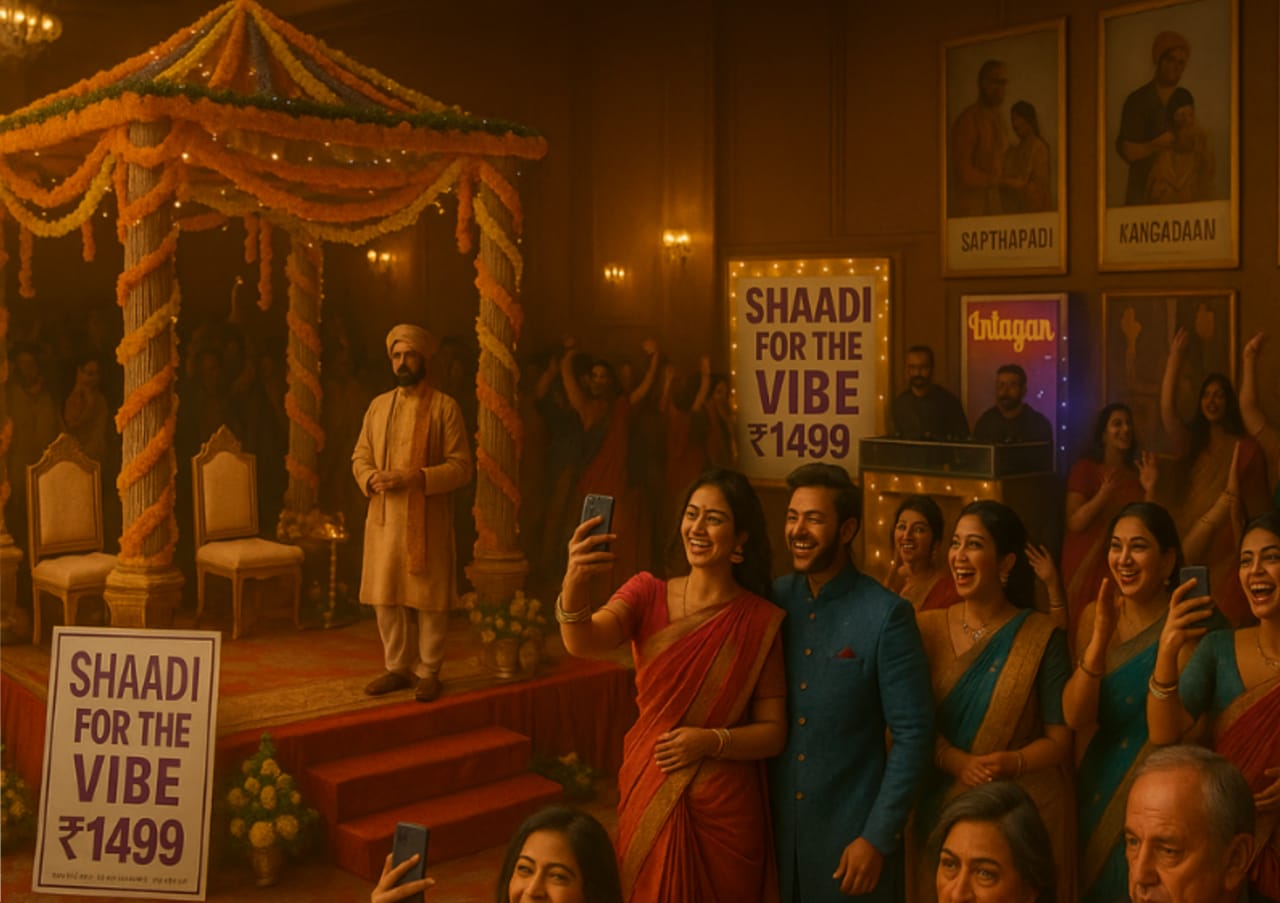Are we celebrating culture or commercialising sacred rituals?
Walking through Delhi's Sainik Farms on a Saturday evening, you might stumble upon something peculiar: a full-blown Indian wedding complete with dhol beats, flower petals, and elaborate ethnic wear. But look closer, and you'll notice something missing: the actual couple. Welcome to India's latest party trend: fake weddings.
At ₹1,499 per head, these events promise all the joy of a traditional shaadi without the emotional baggage, judgmental relatives, or the pressure of finding life partners. It's a concept that's spreading like wildfire across Delhi-NCR, Bengaluru, and Pune, tapping into something deeper than just Gen Z's need for Instagram content.
The appeal is undeniably clever. How often do we get to wear that expensive silk saree or embroidered sherwani gathering dust in our wardrobes? Real weddings are seasonal, clustered around astrologically auspicious dates, leaving months of ethnic wear unemployment. Fake weddings solve this beautifully. They're scheduled convenience.
But there's a darker undercurrent here that deserves examination. The most telling aspect isn't the elaborate staging or the ₹1,499 price tag; it's what these events explicitly promise to exclude. No nosy aunties commenting on weight gain. No uncles interrogating salary figures. No pressure about marriage timelines. No complaints about insufficient paneer in the curry.
This reveals something profound about contemporary Indian family dynamics. We've reached a point where the cultural richness of weddings the food, music, and celebration has become so overshadowed by social toxicity that young people are willing to pay to experience sanitised versions of their traditions.
The irony is striking. Fake weddings preserve the aesthetic and sensory elements of Indian weddings while systematically removing the human connections that traditionally gave these celebrations meaning. It's cultural fast food all the flavour, none of the nutritional complexity.
Critics dismiss this as frivolous Gen Z behaviour, but I see something more significant. These events represent urban India's relationship with tradition: we want to honour our culture, but on our terms. We're not rejecting Indian weddings entirely; we're editing them.
The comparison to Halloween's journey from a niche Western import to mainstream Indian celebration is apt. What starts as urban novelty often becomes cultural norm. Will fake weddings eventually outnumber real ones? Probably not. But they might force real weddings to evolve.
Perhaps the most valuable outcome of this trend could be its mirror effect on authentic celebrations. If families see young people willing to pay for wedding experiences minus the judgment and interrogation, maybe it's time to examine what's driving people away from genuine gatherings.
The fake wedding phenomenon isn't just about parties; it's about young Indians negotiating their relationship with tradition in an increasingly individualistic society. Whether this represents cultural innovation or cultural dilution depends largely on whether we learn from it.
After all, if we need to pay for fake relatives to avoid the real ones, perhaps the problem lies not with the trend, but with what made it necessary in the first place.
